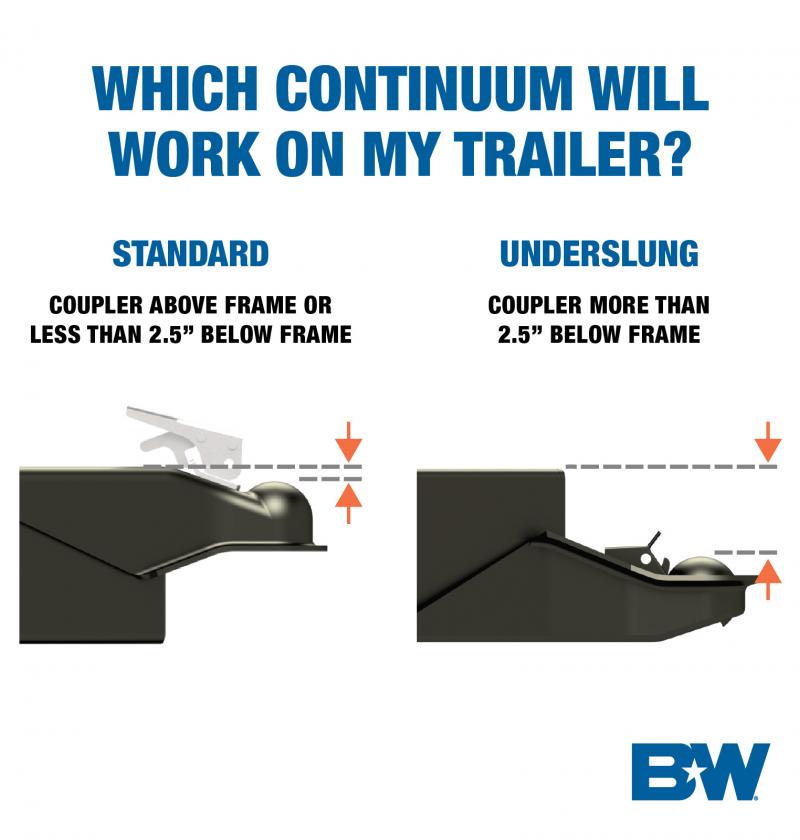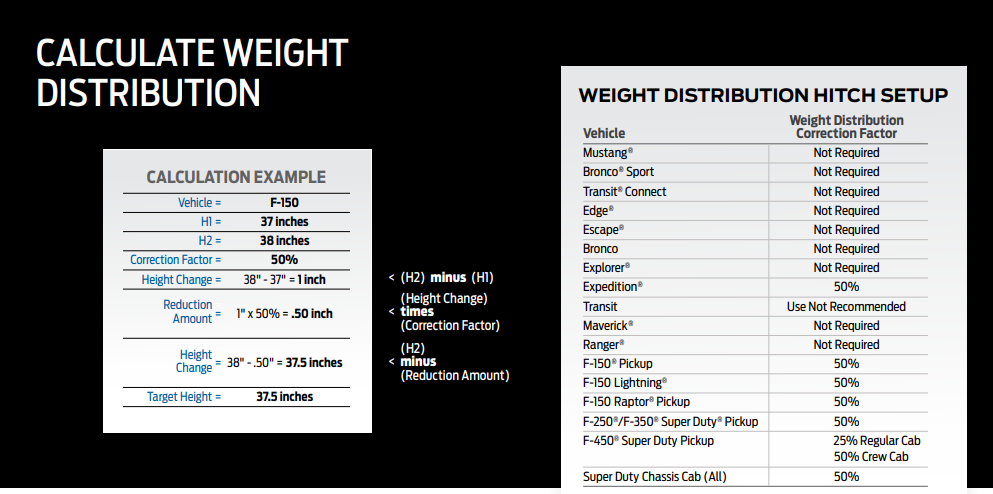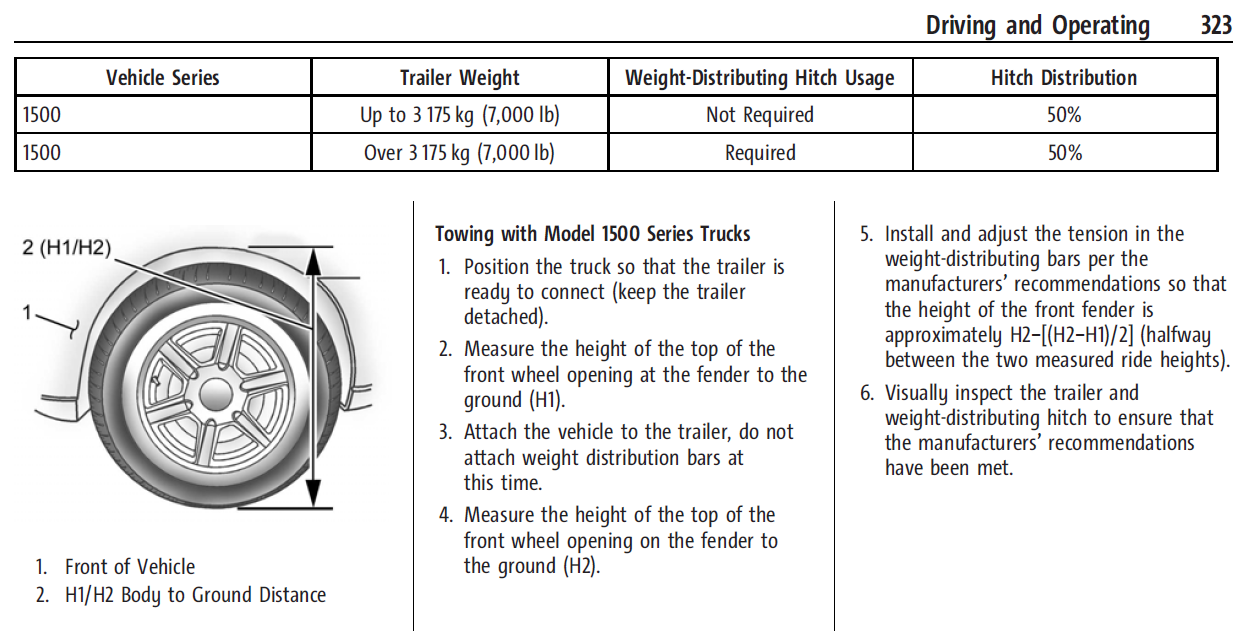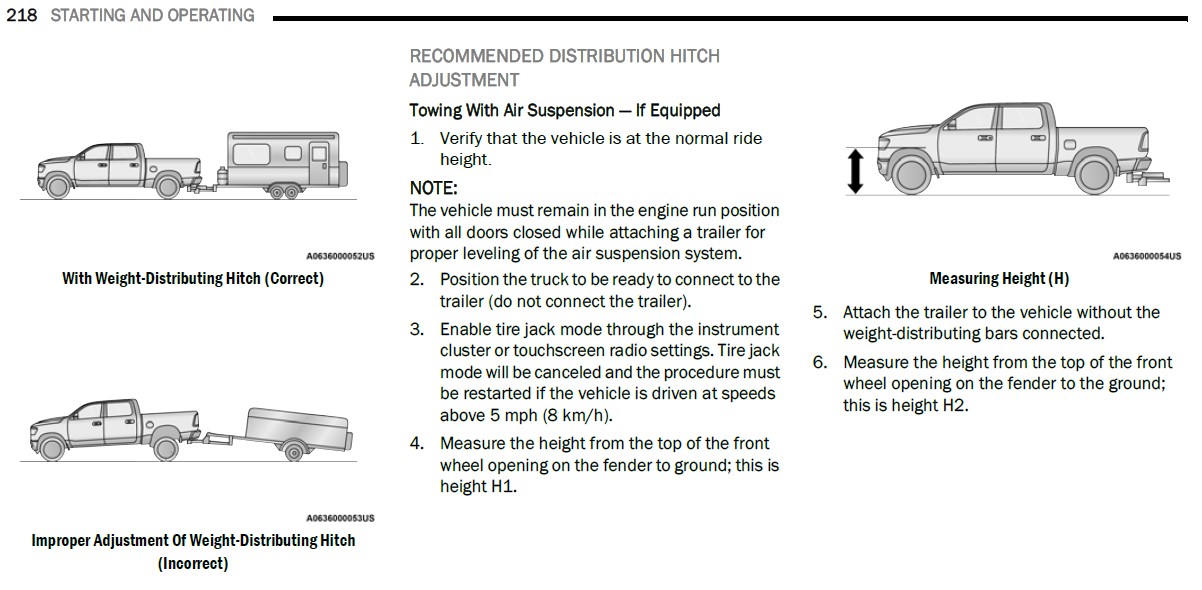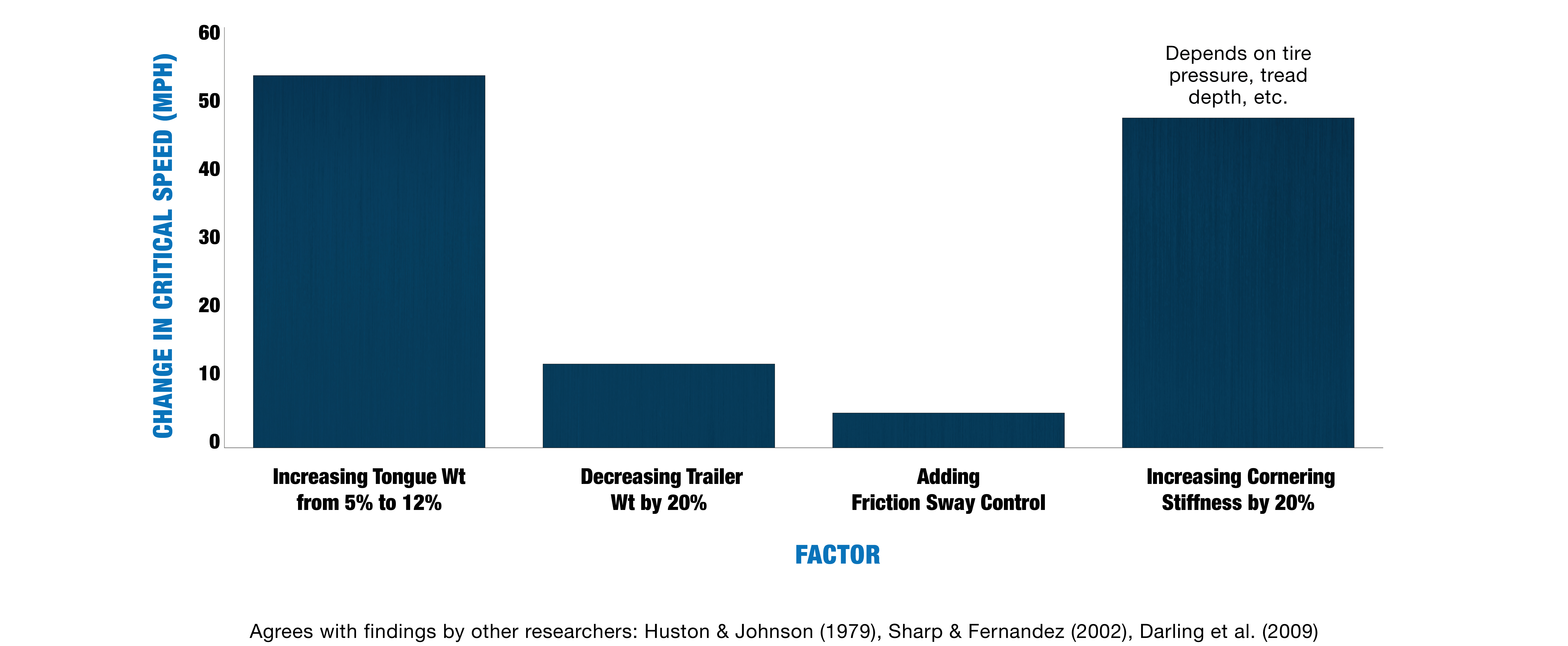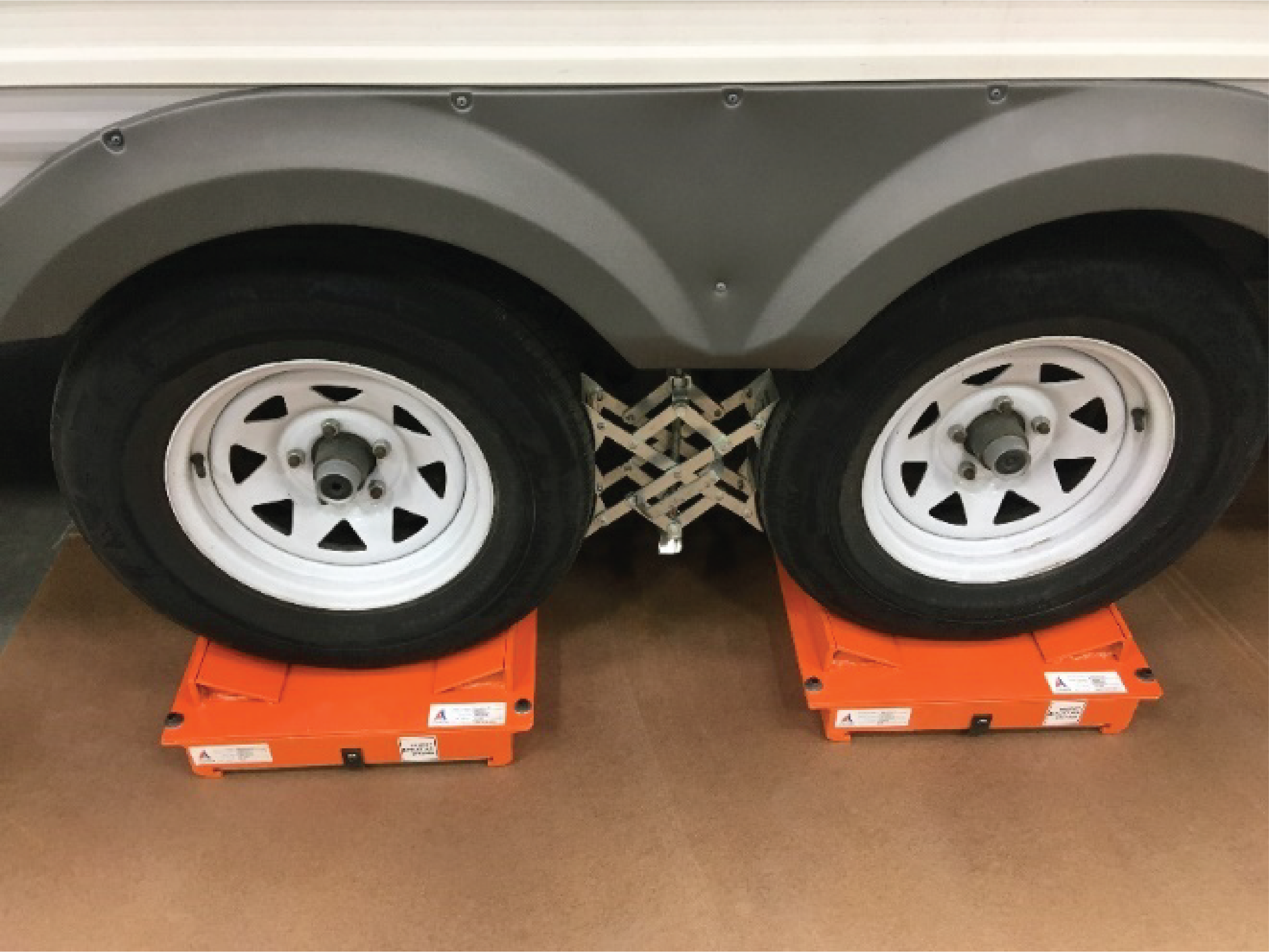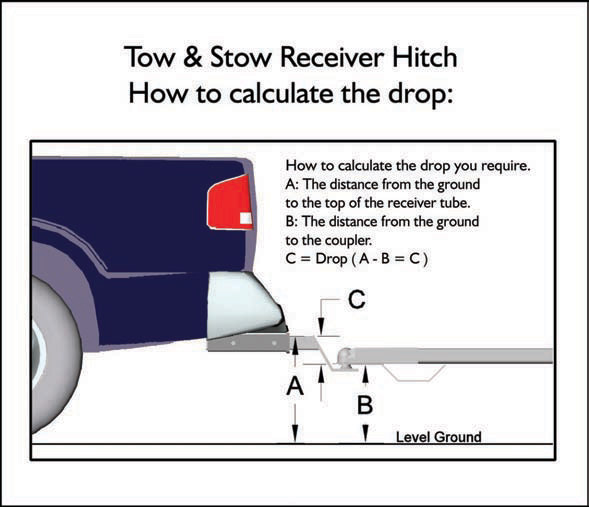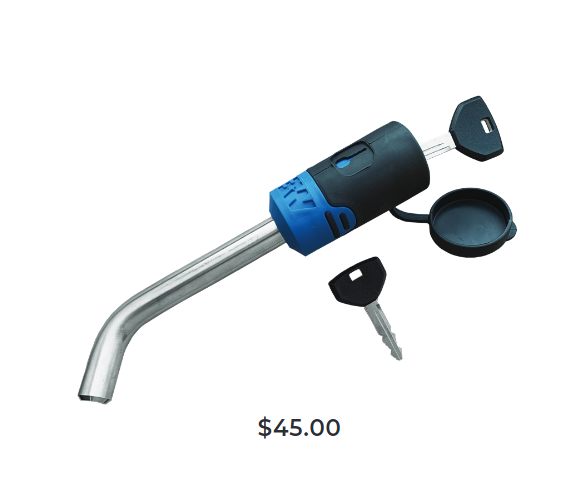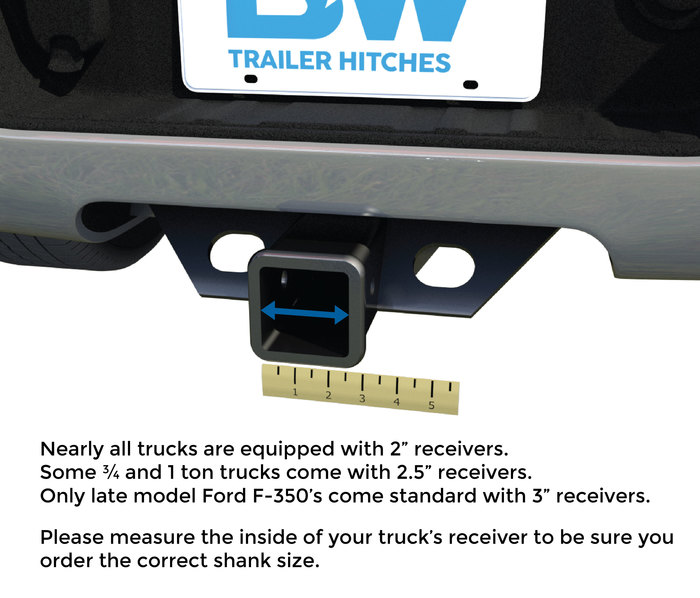Yes. The continuum has as much, or more friction sway control built into it as the leading brands, although we prefer the term ‘sway prevention.’ Because our bars are always ‘loaded,’ our friction sway prevention is immediate and continuous (hence, the name Continuum.) This ‘loading’ or ‘stiffness’ can help with handling, but in our opinion, sway control components do little to stop sway once it starts.
Over the years that we were developing our weight distribution hitch, we studied sway control in an attempt to design the best system. We studied all of them; 2-point, 4-point, adaptive, self-adjusting, self-centering and all the buzz words the industry had invented. We conducted an experiment with the top WD hitches on the market.
We set up a truck and trailer in a warehouse and used air castors under the tires to eliminate the ground friction. We then took readings of the hitch’s resistance to sway, or the force necessary to overcome the friction sway control components of each brand of hitch.
We learned that all brands provide some level of sway control, but that it takes very little force to overcome them. Some brands don’t load until the angle of the trailer is 2-4 degrees or more. On a 25-foot trailer, this equates to 3-5 feet, which means your trailer will be significantly outside your lane before it has a chance to be helpful.
The amount of force required to overcome these devices is low, for instance



